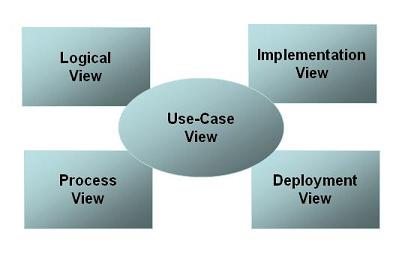As an Architect, you may want to consider the following views (not all views
are relevant to all systems or all the Stakeholders). This set of views is known
as the 4+1 Views of Software Architecture [KRU95]..

-
Use-case view: Describes functionality of the system,
its external interfaces, and its principal users. The use-case view contains
the Use Case Model. This view is mandatory when using the 4+1 Views, because all
elements of the architecture should be derived from requirements.
-
Logical view: Describes how the system is structured
in terms of units of implementation. The elements are packages, classes,
and interfaces. The relationship between elements shows dependencies, interface
realizations, part-whole relationships, and so forth. Note: This
view is mandatory when using the 4+1 Views of Software Architecture.
-
Implementation view: Describes how development artifacts
are organized in the file system. The elements are files and directories
(any configuration items). This includes development artifacts and deployment
artifacts. This view is optional when using the 4+1 Views.
-
Process view: Describes how the run-time system is structured
as a set of elements that have run-time behavior and interactions. Run-time
structure often bears little resemblance to the code structure. It consists
of rapidly changing networks of communication objects. The elements are
components that have run-time presence (processes, threads, Enterprise JavaBeans™
(EJB™), servlets, DLLs, and so on), data stores, and complex connectors,
such as queues. Interaction between elements varies, based on technology.
This view is useful for thinking about
run-time system quality attributes, such as performance and reliability.
This view is optional when using the 4+1 Views.
-
Deployment views: Describe how the system is mapped to
the hardware. This view is optional when using the 4+1 Views.
In addition, you may wish to represent the following,
|

